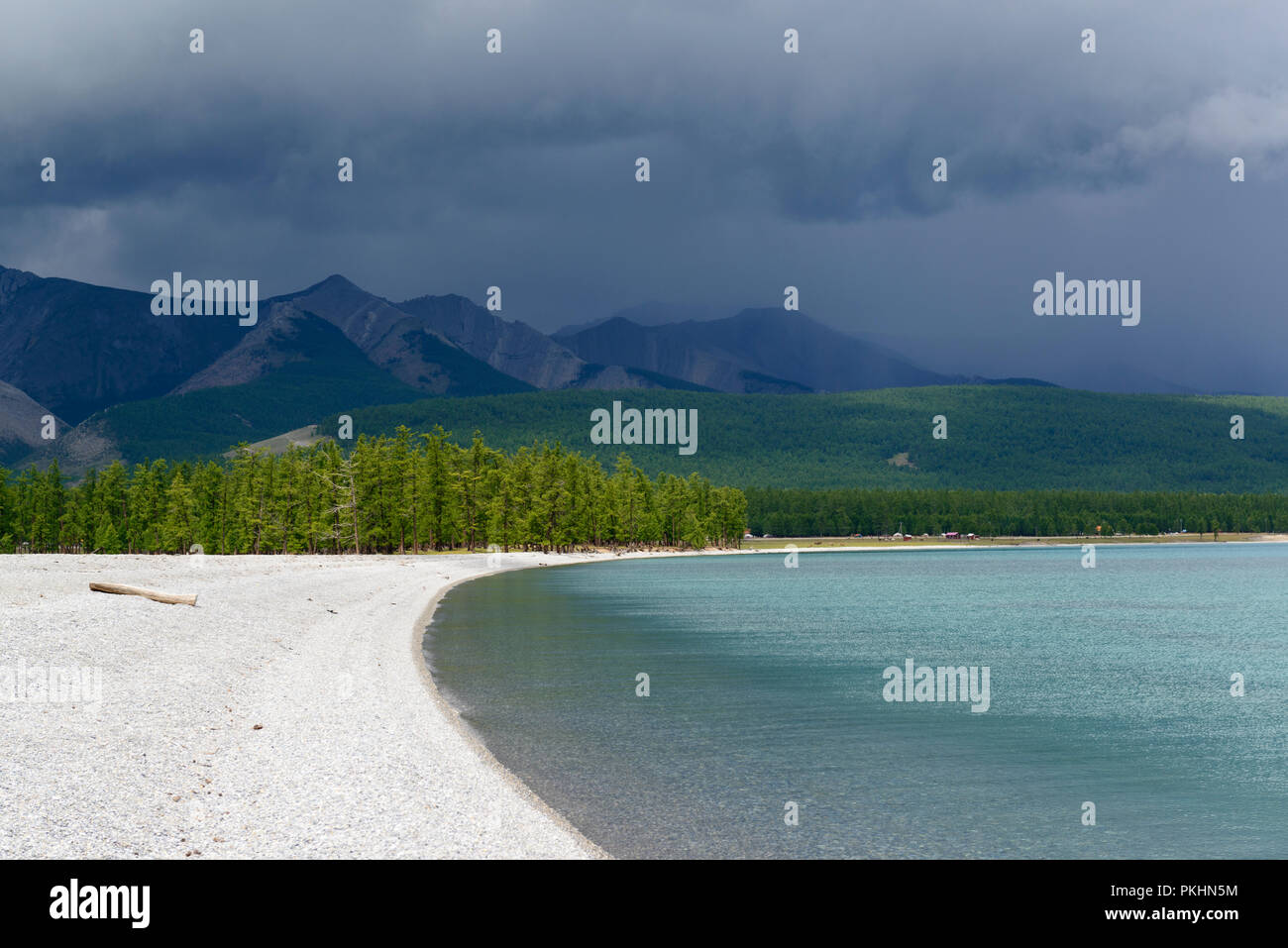Dark clouds hanging above Lake Khovsgol, Mongolia.

Image details
Contributor:
Bert de Ruiter / Alamy Stock PhotoImage ID:
PKHN5MFile size:
89.7 MB (3.6 MB Compressed download)Releases:
Model - no | Property - noDo I need a release?Dimensions:
6853 x 4574 px | 58 x 38.7 cm | 22.8 x 15.2 inches | 300dpiDate taken:
7 July 2018Location:
Khovsgol Lake, MongoliaMore information:
Wikipedia: Lake Khövsgöl (Mongolian: Хөвсгөл нуур, Höwsgöl núr; classic script:Kobsogol naghur, köbsügül naɣur), also referred to as Khövsgöl dalai (Хөвсгөл далай, Höwsgöl dalai; Khövsgöl ocean) or Dalai Eej (Далай ээж, Dalai éj; ocean mother), is the largest fresh water lake in Mongolia by volume and second largest by area. Khövsgöl Nuur is nicknamed "Younger sister of the Sister Lakes (Lake Khövsgöl and Lake Baikal)". Khuvsgul nuur is located in the northwest of Mongolia near the Russian border, at the foot of the eastern Sayan Mountains. It is 1, 645 metres (5, 397 feet) above sea level, 136 kilometres (85 miles) long and 262 metres (860 feet) deep. It is the second-most voluminous freshwater lake in Asia, and holds almost 70% of Mongolia's fresh water and 0.4% of all the fresh water in the world.[1] The town of Hatgal is at the southern end of the lake. Its watershed is relatively small, and it only has small tributaries. It is drained at the south end by the Egiin Gol, which connects to the Selenge and ultimately into Lake Baikal. Between the two lakes, the water travels a distance of more than 1, 000 km (621 mi), and falls 1, 169 metres (3, 835 feet), although the line-of-sight distance is only about 200 km (124 mi). Its location in northern Mongolia forms one part of the southern border of the great Siberian taiga forest, of which the dominant tree is the Siberian Larch (Larix sibirica),